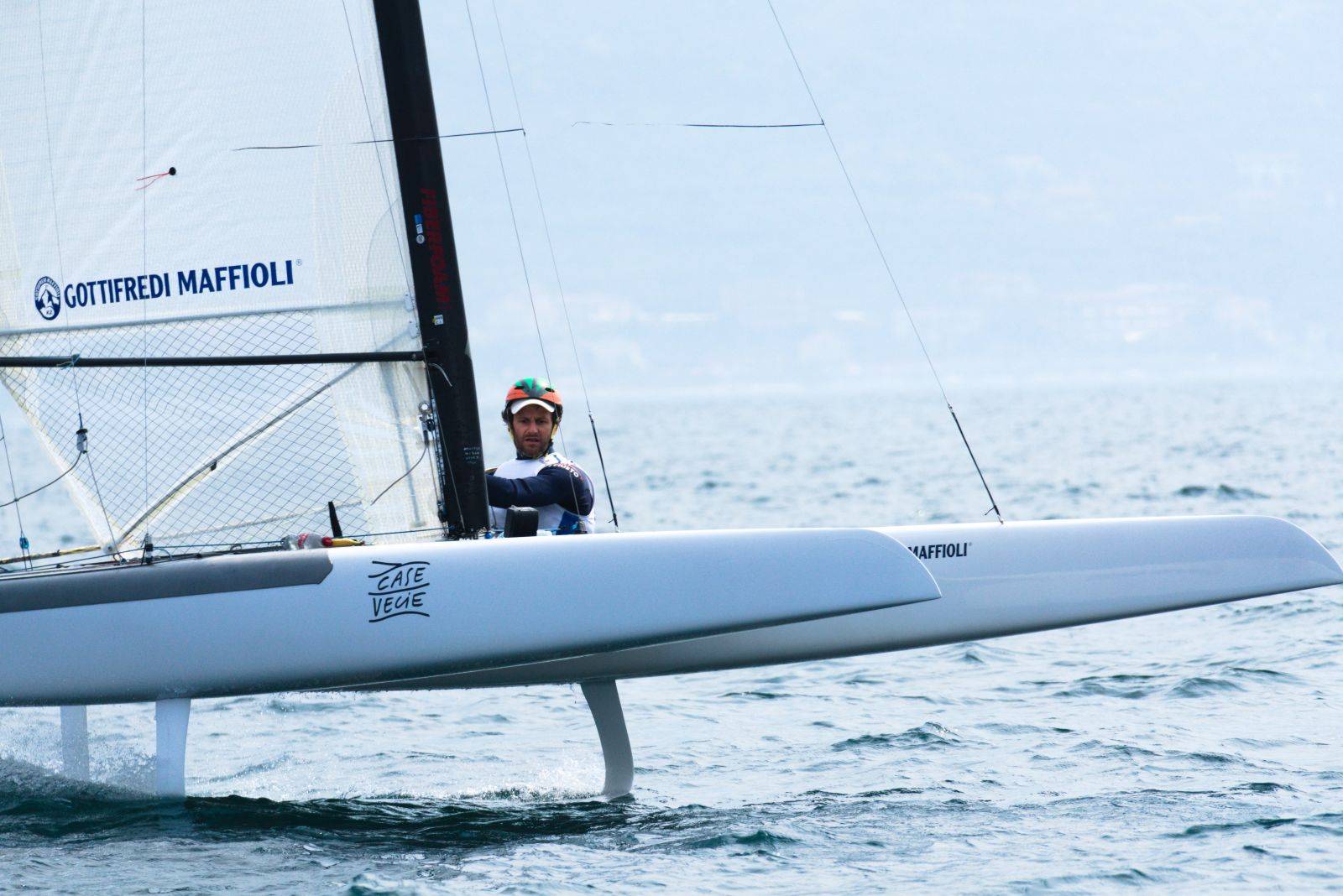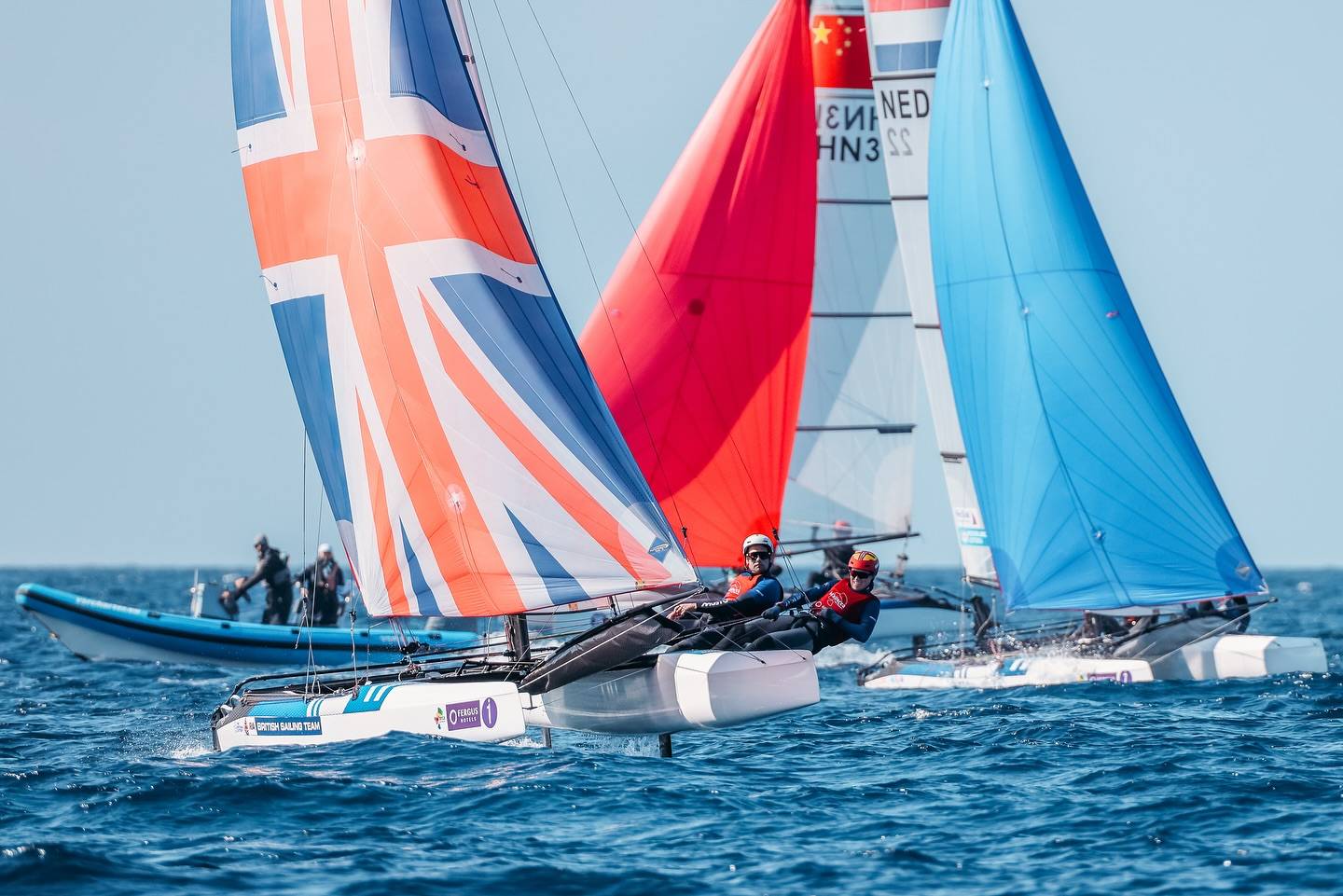“2013 CSN Boat of the Year”: Nacra 17
Images: Thomas Zajac // Tanja Frank – Sailingteam / Jesús Renedo-Mapfre Sofia.
Not having a reliable voting system this time prevented an efficient poll process, although the N17 got more ‘Likes’ in the poll, I decided to do like last year and define the CSN myself. –
In 2012 Team New Zealand Flying 72 was the CSN of the Year, Oracle end winning the Cup but only after improving the Kiwis breaktrouhg concept.//
————
The process of having Multis back to the the Olympics can be found here in CSN archives. After a long process and hard work & lobby by several people including the late Nick Dewhirst , the mulithull community forced ISAF arm to get cats back to the Games.
ISAF then decided to issue a mandatory Mixed crew for Multis, and wrote a set of recommendations for the new boat. When all was to be defined between the Viper and the Tornado , Nacra made a bold last minute move when they decided to bid with the Nacra 17.
Larsen & Vink got together again with Pete Melvin (Nacra Infusion/F20C/F16) to develop a specific boat for the trials. Taking advantage that the F18 decided and forced the builders not to present bids, Nacra went for a lightweight updated version of it.
Based in their F16 platform, they enlarge the hulls to get a wider wind/weight range, but cautiosly stop cms of being a full 18′ footer, thus labeling it the ’17’.
Adding curves boards that were tested and produced in their Nacra F20 Carbon , (You can trace those C boards to Nils Bunkenburg Nikita A-Class) , plus a carbon mast (9mts) and lightweight construction they instantly offered the boat I labeled “The Candidate” to finally win the Santander trials.
The problem was they didn´t had a class formed, the Viper had the advantage in that area, fact that I thought it would prevail in the end.
The Tornado Class presented some pristine ‘old’ boats
, to show how good the Marstrom Ts construction was. The powerful sized T went to win the majority of the trials races but they also leave an 8:1 mainsheet, a little tough work for new girls crews. The 16′ Goodall Designs Viper performed really good in those races.
But in the end, the Nacra 17 package got the attention of the mixed crew sailors, and from the ISAF judges too. Having such a good updated and light weight concept that also suited Mixed crews perfectly was too much for the mighty T and the Viper performance & fleets.
When the Nacra 17 was production launched it began to show some issues, that we can say are pretty normal for new boats. Even carbon masts started to fail. Dark times for the new Olympic boat, although we always pointed out that how Nacra responded to those issues were the key and not the problems themselves.
Finally the N17 got back its carbon mast, now built by Hall spars, and provided some good on site regatta customer service, while the crews started to get the feeling of the new boat.
The powerful foil/rig/lightweight combo offered some extra lift that forced vertical jumps, it was the wild ride all over the place. Slowly the crews learned to control it to take full advantage of that extra gear. Double trapeze became a ‘de facto’ mode downwind, and every single feedback I was receiving was excellent on the boat performance.
The demand was pretty high and the campaigners went buying the Nacra 17 en masse, in expense of other classes sales of course. The first racing year was a success , and this second season will provide without a doubt a better show with several big names returning or entering the Olympic arena.
“The Candidate” fulfilled its label and returned to the Multihull community the deserved Olympic status in an impressive way.
Quite an achievement in such a short time, a true milestone for Multis history, thus making the Nacra 17 the “2013 CSN Boat of the Year”.
—————






























I just heard that my great sailing friend and former CEO of Hobiecat Europe has passed. May The endless oceans…
...Report was sent by an F18 Sailor, if you want Hobies reported send your own, we'll publish as usual. Cheers.
Looks like in your report the Hobies are not really present. Suggest to rewrite the article.
Thanks for the great report Wik. Great battle.
If I correctly read the results the overall winner this year is a Hobie16